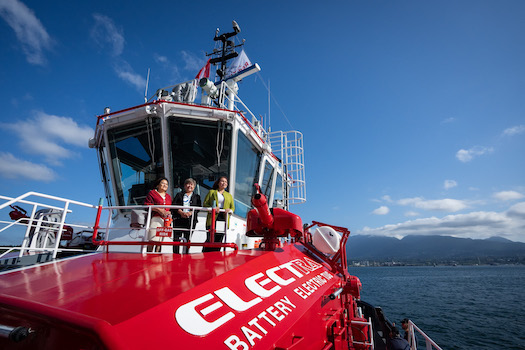Value of cycling “grossly underestimated” in Canada
 In the Netherlands, renowned for its safe and extensive cycling infrastructure, the two groups that cycle the most are teenagers and seniors.
In the Netherlands, renowned for its safe and extensive cycling infrastructure, the two groups that cycle the most are teenagers and seniors.
Yet, here in Canada, we mostly look to bike-to-work data to plan our cycling infrastructure.
Statistics Canada’s long-form census asks the question, “How did this person usually get to work?” The result is used by many municipal departments to make decisions about investments in cycling.
Rebecca Mayers, postdoctoral candidate in the School of Planning at the University of Waterloo, recently released a study suggesting that this approach grossly underestimates the value of cycling in Canada.
"Less than five percent of the population is biking to work, but it's estimated that almost a quarter of the Canadian population is engaging in the activity," Mayers told Research Money.
"There is this emphasis on cycle commuting [in Canada] because, as a society, we mainly focus on getting people to and from work with the lowest travel time possible. However, when we only collect data on commuting, we fail to recognize trips that many others are taking. The data from the census also ignores multi-modal trips such as biking to the train, or biking in the summer but driving in the winter.”
Mayers’ research argues for greater recognition of the diversity of cycling travel behaviour, both to improve equity and encourage greater participation in cycling.
She says that the cycling trips missed by the Statistics Canada bike-to-work data include care trips mostly done by women, such as taking kids to school, and trips by older adults who are retired. It also ignores trips that do not fall under typical work categories, such as food delivery services and the recycling of bottles by the homeless.
Her study also urges planners to consider recreational riding as a way to increase participation, investment and representation in cycling.
"We need to challenge the limited belief that investments are only worthwhile if they’re for the purpose of going to work," said Mayers. “Cycling is one of the most popular leisure activities in Canada. Investing in infrastructure to make leisure trips feasible will translate to other trips via bike, because there will be safe and secure infrastructure to make cycling as enjoyable as possible."
In the Netherlands, data is collected on all bike trips regardless of destination or purpose, and is incorporated into all policy decisions regarding cycling. This enables planning staff to focus on groups and areas of the city needing infrastructure to make individuals feel safe and comfortable while cycling, such as children, older adults, newcomers and people with a disability. It also likely explains why the cycling rate of all ages and abilities is higher in the Netherlands than in Canada.
Some jurisdictions in Canada do collect more detailed information on cycling, including for work, errands and leisure. For example, Vancouver has an annual household transportation survey, showing 44 percent of people there walk, bike, or use transit to get around. Both Calgary and Winnipeg have used bike counts to better understand general cycling trends year-to-year and throughout the season.
Montreal has long been ranked North America’s top city for cycling, scoring in the top 20 in the Global Bicycle Cities Index. In Montreal, daily bike count data is publicly available through its Eco-Counter interactive public web page, and historical bike count data is available for download through the City’s OpenData portal. This information has been used, for example, to confirm the value of Montreal’s new Réseau express vélo bike network and to justify clearing bike paths in the winter.
However, according to Mayers, “Although this kind of data is great for those cities, it's hard to compare one city to the next because their datasets are different. These approaches can also be highly cost-prohibitive for smaller cities and towns across Canada, despite the data being needed to make important transportation decisions.”
She and her team are calling for a national household travel survey to be administered across Canada, so that more accurate data drive decisions around active transportation.
“If all cycling trips were taken seriously, including those that do not end at work, fall outside of regular business hours, and take place through alleys or recreational trails instead of streets, decision-makers would have more information to inform and justify more responsive, robust cycling plans."
R$
| Organizations: | |
| People: | |
| Topics: |
Events For Leaders in
Science, Tech, Innovation, and Policy
Discuss and learn from those in the know at our virtual and in-person events.
See Upcoming Events
You have 0 free articles remaining.
Don't miss out - start your free trial today.
Start your FREE trial Already a member? Log in
By using this website, you agree to our use of cookies. We use cookies to provide you with a great experience and to help our website run effectively in accordance with our Privacy Policy and Terms of Service.





